Anything for Freedom
The coasts of British Columbia are picturesque, foreboding, vibrant and visited by thousands of tourists every year from all around the globe.
However this coastline has seen its share of horrific acts and tragedy over the years, everything from pirates, rumrunners and sinking ships to human trafficking.
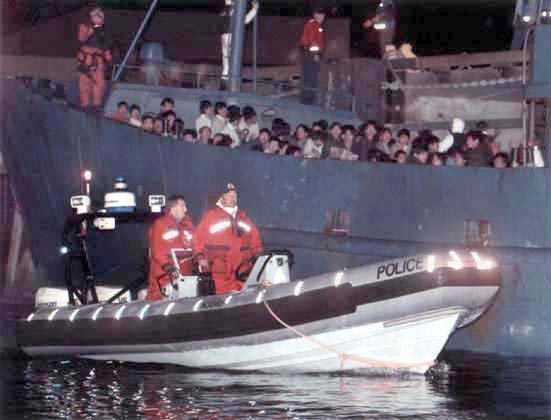
Refugees aboard "Blue"
In 1999 four ships sailed across the Pacific with 599 desperate Chinese immigrants to Canada in search of a new life. On arrival to BC a large number of the immigrants were sent home, the ships were seized and since never claimed by their Chinese owners became federal property.
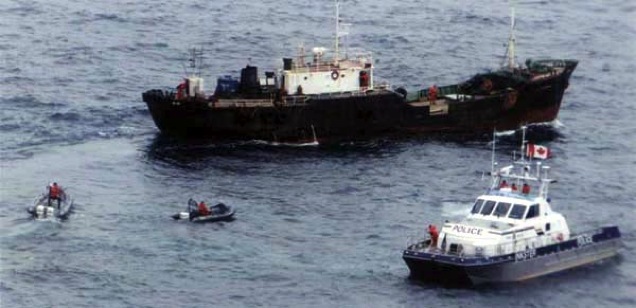
The Black Dragon
Each of these people paid approximately $30,000 for the promise of amnesty and a better life. Many did not have the entire amount; they were told that they would get good jobs in New York and would be able to pay off these debts. They did not realize that “good jobs” were actually work in prostitution and gangs, and that the journey across the waters would be so arduous.
The people responsible for the ships and their cargo we members of the Snakeheads, know around the world as a gang who traffic in the illegal smuggling of refugees. The people kept in the holds of the vessels were never allowed on the deck. Small holes were made to pass down rice and vegetables, often smelling of gasoline. Pots, used for toilets, were dropped down into the holds, and were not cleaned regularly. The smell of body odor, gasoline, feces and rotting vegetables filled the small hold where people where held.
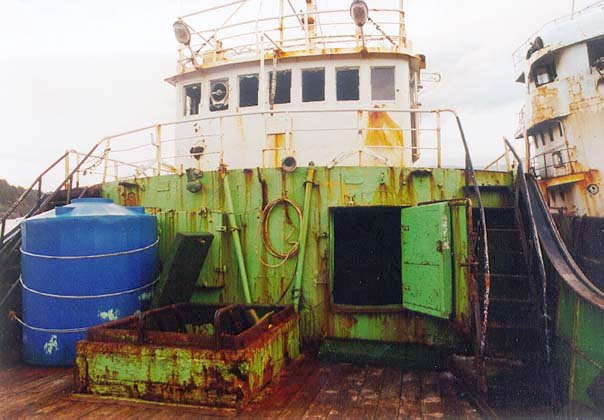
"Blue"
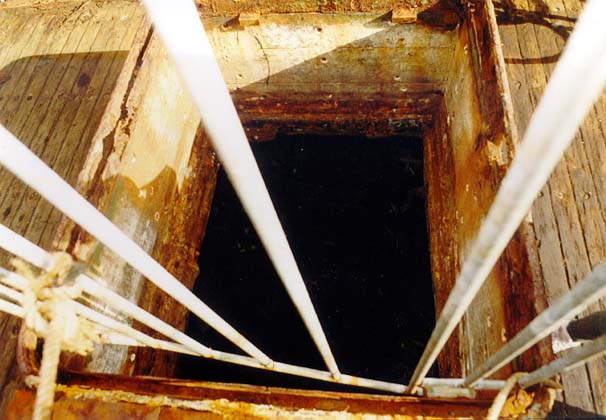
Bars to keep people in the hold
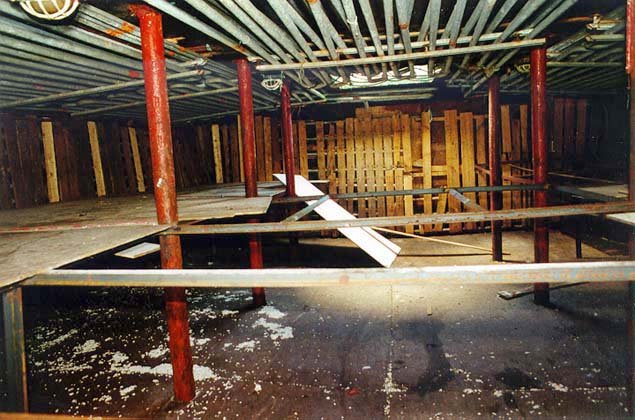
Inside "Blue"
Each of the four boats were unique from each other and an idea was put forth by the Port Alberni Reef Society to purchase the vessels from the government and repurpose them as artificial reefs around Vancouver Island. Before the purchase took place the ships had been moored in Port Alberini and the Reef Society had opened them up for tours to raise money for the purchase, required clean up and eventual sinking of the boats.
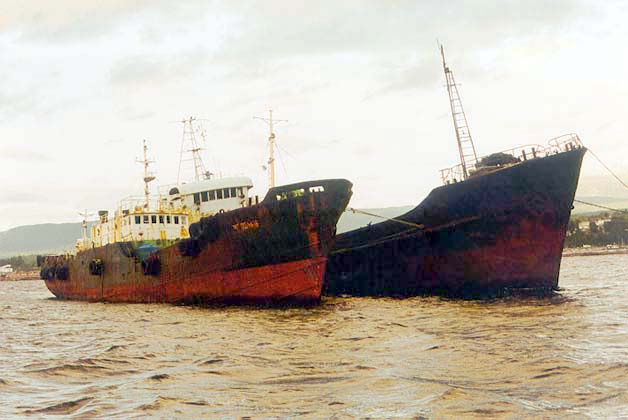
Locals came daily to watch the progress or to get a second look at the haunting boats. Although the tours were quite disturbing to some people, for many, understanding the past of the ships was important. Knowing the ships were used to carry immigrants across the ocean will make diving to them a more meaningful experience.
The rusted hulls miserably creaked together at the dock, lending voice to the ghostly ships. A few broken shards of glass hung where windows once had been. Covered with rust, the boats’ colour was difficult to discern. Two of them listed sideways while another had holes rusted right through the rails. Frayed and grimy ropes snaked haphazardly across the decks as doors pulled crookedly at hinges.
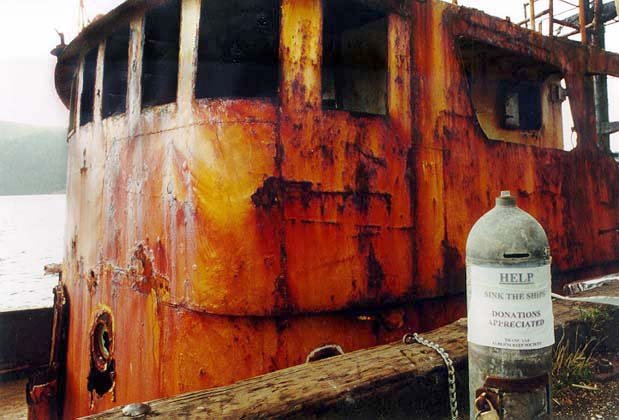

Three of the four ships were slated to be sunk as artificial reefs. While the fourth, a Korean fishing vessel, named the Black Dragon was in good enough condition to keep afloat and towed to Vancouver for a refit. After being moored in Port Alberni’s Harbour Quay for just over a year, “Rusty” and “Blue” were finally ready to be sunk. Preparations were made to sink the two of the boats in Underwood Cove, just off China Creek Marina in Port Alberni, the third, an unnamed vessel in Barclay Sound.
Sinking the three boats was a complex process, with the frailty of the boats being a major concern. In fact, the rustiest boat was in such poor condition that the bow caved in when the crew attempted to tow the ship. Rusty and Blue eventually made there way to Underwood Cove but Blue sank almost immediately. It rests well beyond recreational diving limits, approximately 90 meters (300 ft.) below the surface. Rusty on the other hand, rests in about 25 meters (75 ft.) of water and is the only artificial reef accessible by shore in North America. The third boat, sunk in Barclay Sound a little later, is a shallow reef and easily accessed from a nearby vacation lodge.
Diving Rusty is interesting and a great photographic opportunity. The marine life has embraced their new home and has begun to thrive.
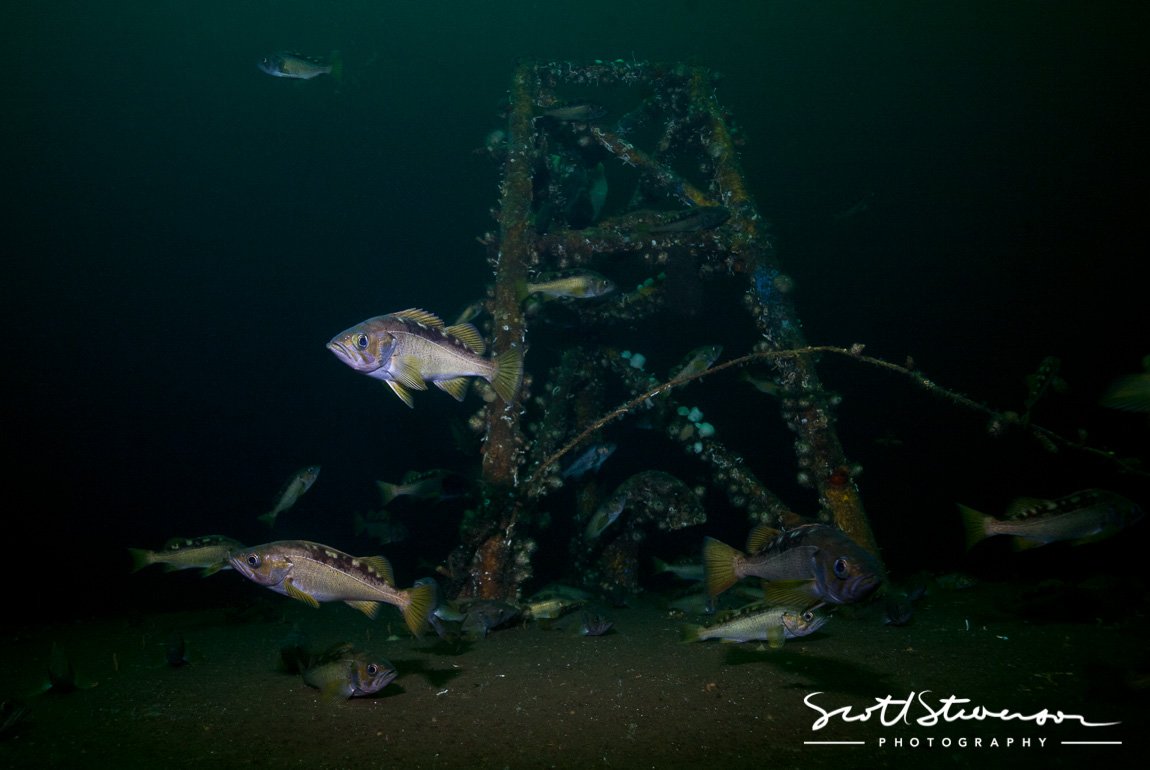
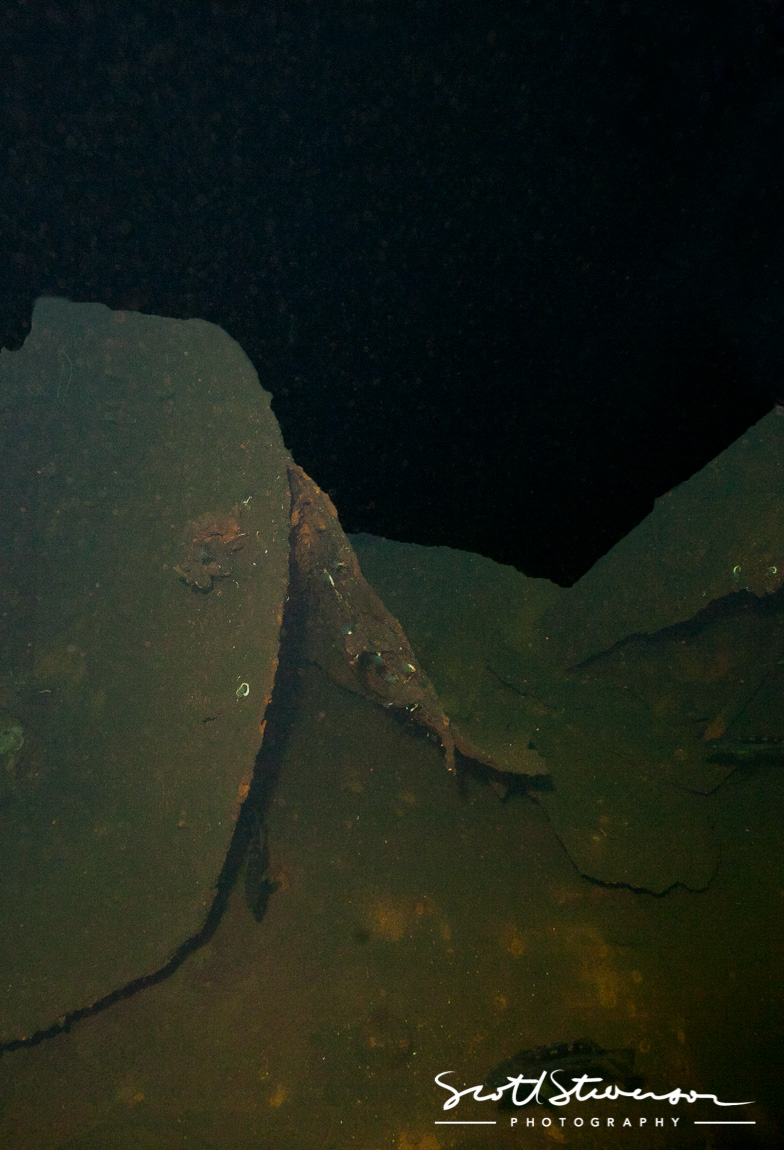
The broken bow of "Rusty"
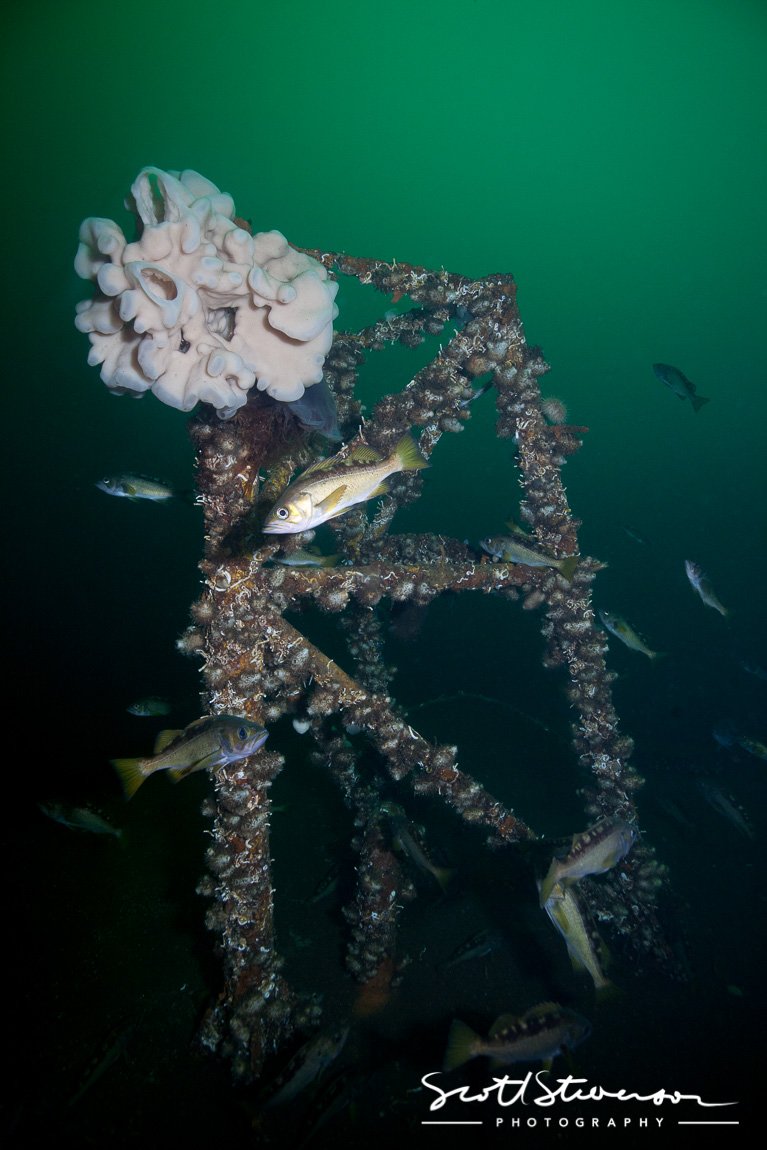
The Black Dragon sunk on its way to Vancouver. It rests in open water, sitting upright about 35 meters (90 ft.) from the surface. Diving this is incredibly hazardous. There are no surface markers on the wreck and it is in a high current area. Most of the structure has collapsed and is littered with derelict fishing gear. All of my attempts to dive this wreck over the years have failed due to weather, current and bad visibility. I only know of a few successful dive make on this ship.
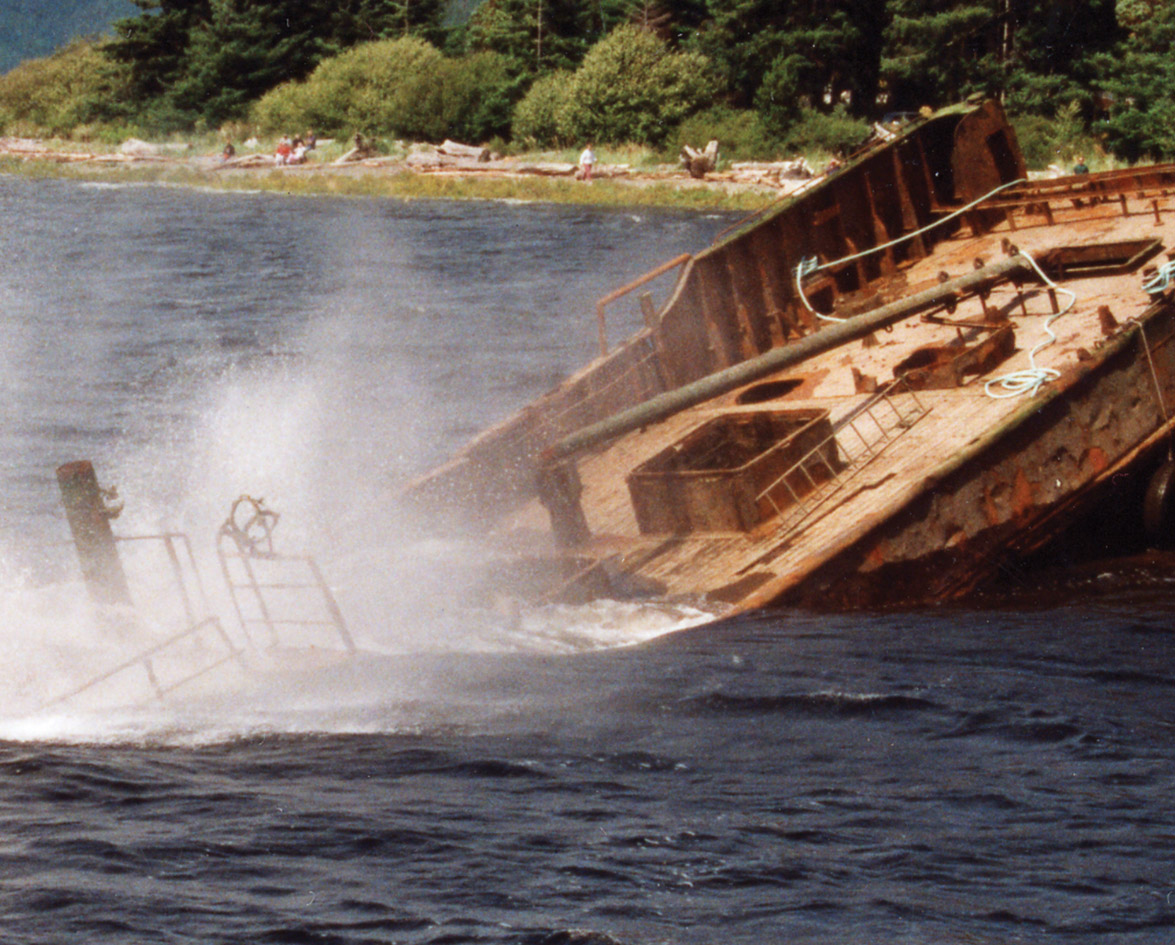
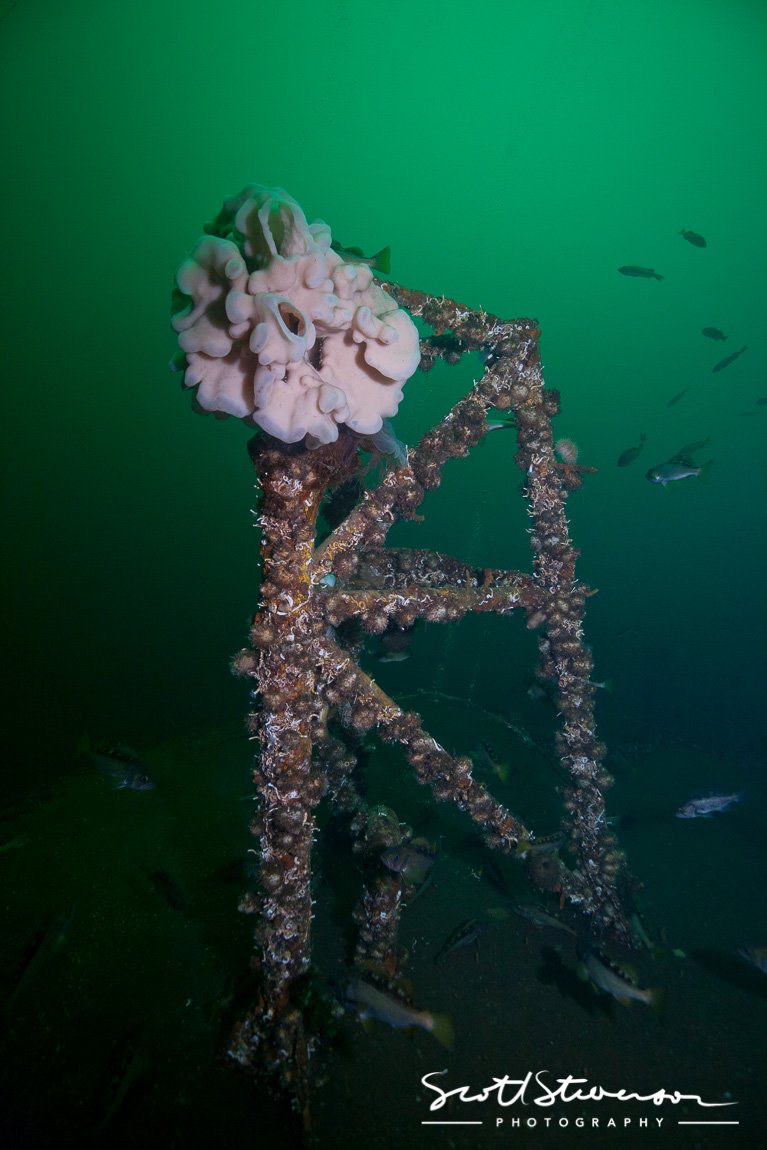
During their time above water, the ships provided insight into the plight of the Chinese refugees while unifying an entire community, who were proud to be involved with such an important part of Canadian history. Now on the ocean floor, they serve as permanent markers of the immigrants’ desperate journey, continuing to interest and educate tourists and locals alike. The boats will always represent an important part of British Columbia and Canada’s history. Thanks to the residents of Port Alberni, the Coast Guard and divers, the ships have found their final resting place.
Thank you for reading.

No comments